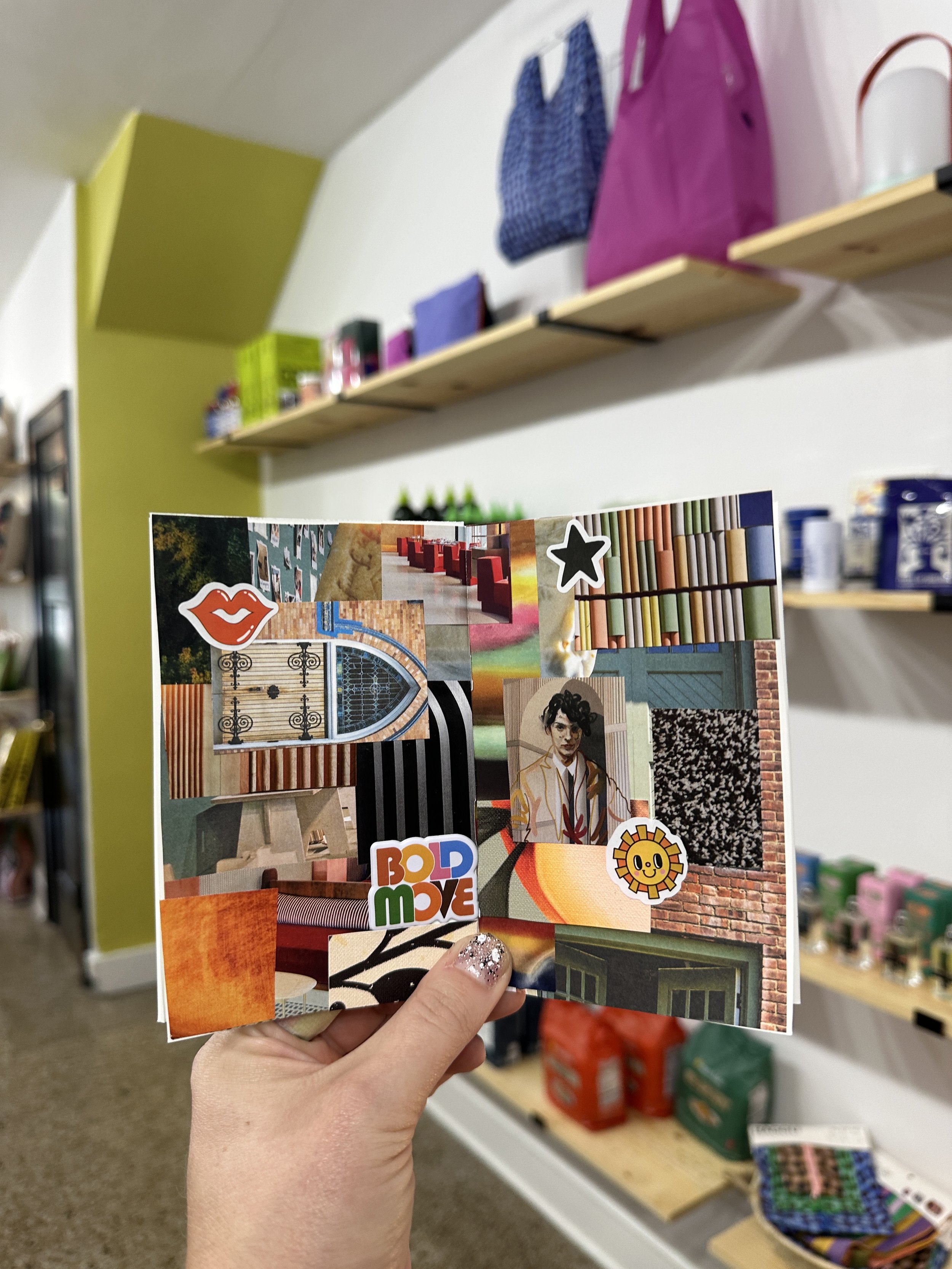A Bit About Color Theory
Have you ever walked into a room and just known something is off but you can’t put your finger on it? Maybe it feels cavernous, or the opposite, like it’s closing in on you. Or maybe you’ve brought a gallon of paint home from the store, excited to change your space, only to realize the color is all wrong. Learning the basics of color theory can help you avoid these color mistakes.
Color theory is an essential aspect of interior design that can help create harmonious, cohesive spaces. Knowing some basics of color theory allows you to select colors that complement each other and create a mood or atmosphere. A well-planned color scheme can make a room feel more spacious, cozy, inviting, or energetic.
At Ebb & Flow we offer a Color Theory workshop that overviews the basics of the color wheel, color psychology, and how to use color schemes in interiors. In this class, students leave with a Color Theory Zine that includes their mood board and color palette.
A few basics to get you started with Color Theory (sign up for our workshop to learn more!)
Make a Color Palette: Choose 4-6 colors and stick to them throughout your entire home. Doing so will create a cohesive design.
Use Samples: Samples allow you to visualize how different materials, colors, and textures will look together in a space. By physically placing samples next to each other, you can see how they complement or clash with each other and make informed decisions about what to use in your design. The lighting in your space will change the way items look, especially color on the walls. Use a color sample to see how it changes throughout the day based on the light that a room is getting.
Use the 60-30-10 Rule: When in doubt, use this rule to create a well-balanced color scheme in a room. 60% of the room's color should come from a dominant color, such as the walls or larger furniture pieces. 30% of the color should come from a secondary color, such as curtains or smaller furniture pieces. Finally, 10% of the color should come from an accent color, such as throw pillows or artwork.
Check our Events Page for upcoming color theory workshops!

